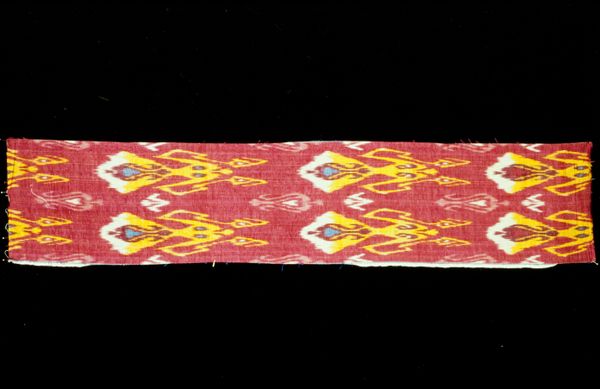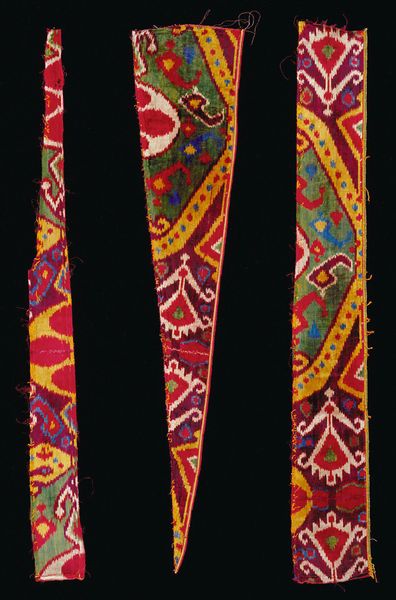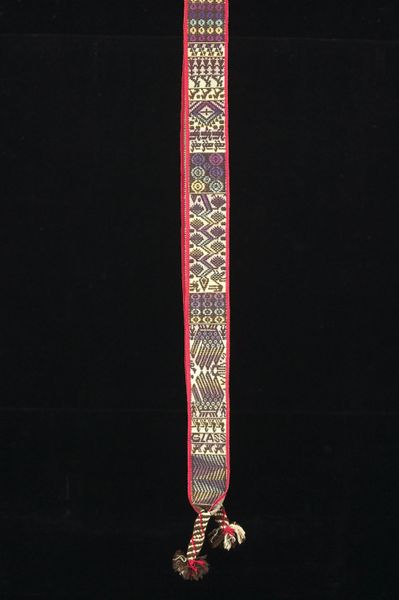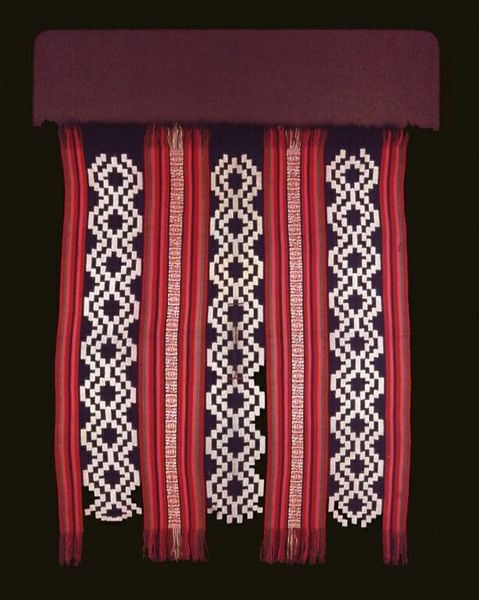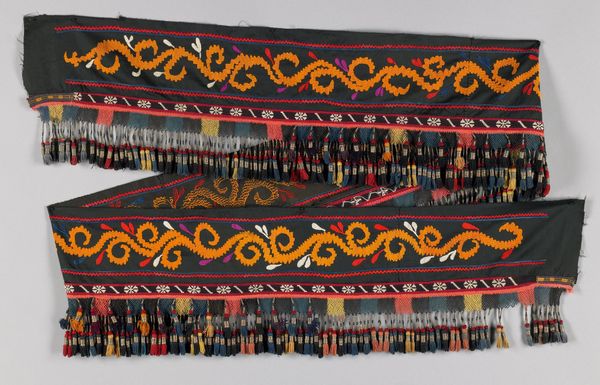
fibre-art, weaving, textile
#
fibre-art
#
weaving
#
textile
#
geometric
#
indigenous-americas
Dimensions: 39.4 × 20.3 cm (15 1/2 × 8 in.)
Copyright: Public Domain
Editor: This textile work, titled "Border Fragment," dates back to 100-200 AD, created by the Paracas culture. It's a vibrant piece of fibre art currently housed here at the Art Institute of Chicago. The abstract, almost geometric patterns have such a unique character. How would you interpret this work, especially in the context of its time? Curator: Given the cultural context, the patterns you see were probably far more than decoration. For the Paracas, textiles were a vital medium for expressing beliefs and social structures. Weaving was likely a communal activity, imbued with ritual and meaning. It would be intriguing to research the cultural impact of natural sources of dyes to understand social and power dynamics. Editor: So, you're suggesting this fragment might give us insight into their worldview, not just their artistic skills? Curator: Precisely! These motifs weren't simply aesthetic choices. Do you see recurring figures, and can you notice any change from abstract to naturalistic representation within these repetitions? Indigenous populations use symbolic representations as indicators of class and status. This visual representation served as propaganda, communicating ideology and strengthening ruling groups, thereby affirming cultural narratives. How do we translate meaning today in such tangible forms? Editor: That’s fascinating, I hadn't thought of it as a form of propaganda. What do you find particularly striking about how museums display works such as "Border Fragment"? Curator: By isolating a fragment like this in a museum setting, we risk losing sight of its original function. Displaying it decontextualizes it from its original context. Shouldn’t museums better convey the indigenous framework from which pieces originate? Editor: I see what you mean; that contextual background is key. I’ll certainly keep that in mind for my own research. Curator: Absolutely, thinking about how art interacts with, and is shaped by, social and political forces provides another fascinating approach to history. Editor: Thanks, that's given me a whole new perspective.
Comments
No comments
Be the first to comment and join the conversation on the ultimate creative platform.




